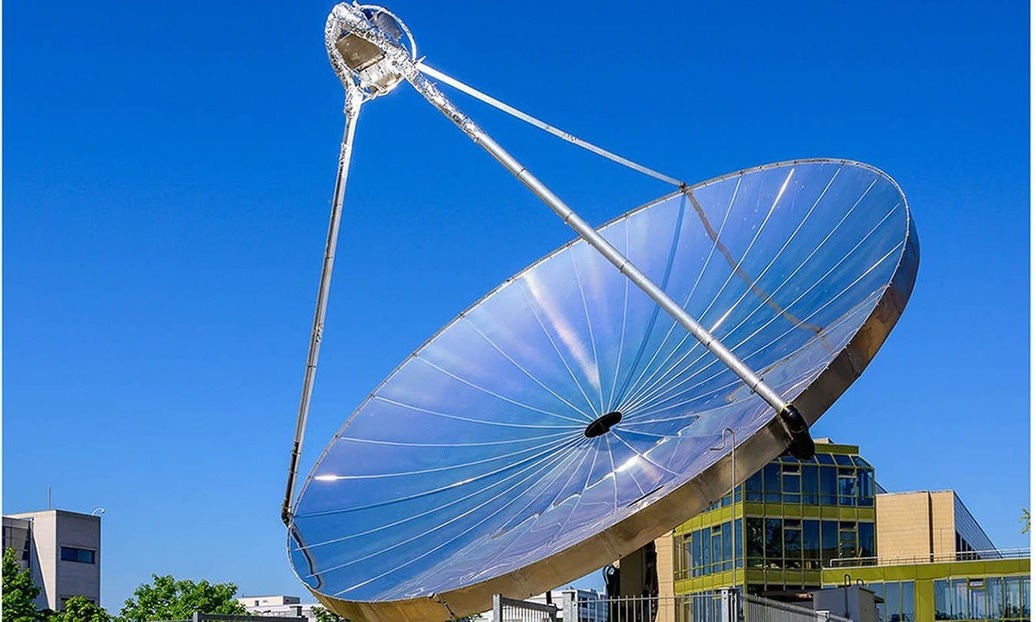Given its resemblance to a satellite dish or other telecommunications equipment, a parabolic dish on theEPFLcampus is easily missed. The unique feature of this dish is that it functions like an artificial tree. A reactor on top of the dish uses sunlight concentrated approximately 1,000 times to transform water into useful and sustainable hydrogen, oxygen, and heat.

The LRESE parabolic dish. Image Credit: LRESE École polytechnique fédérale de Lausanne
This is the first system-level demonstration of solar hydrogen generation. Unlike typical lab-scale demonstrations, it includes all auxiliary devices and components, so it gives us a better idea of the energy efficiency you can expect once you consider the complete system, and not just the device itself.
Sophia Haussener, Head, Laboratory of Renewable Energy Science and Engineering, School of Engineering, École polytechnique fédérale de Lausanne
She added, “With an output power of over 2 kilowatts, we have cracked the 1-kilowatt ceiling for our pilot reactor while maintaining record-high efficiency for this large scale. The hydrogen production rate achieved in this work represents a really encouraging step towards the commercial realization of this technology.”
The research expands on earlier work that used the Laboratory of Renewable Energy Science and Engineering’s high-flux solar simulator to demonstrate the idea on a small scale and was published inNature Energyin 2019. The team has since published the results of its effective, multi-product approach that was scaled up under real-world conditions in the same journal.
Waste Not, Want Not
Artificial photosynthesis is the process of producing hydrogen from water using solar energy, but the LRESE system is unique since it can also create heat and oxygen on a large scale.
Following the concentration of the sun’s rays in the dish, water is pumped into its focus area, which houses an integrated photoelectrochemical reactor. Photoelectrochemical cells in this reactor employ solar energy to electrolyzer or divide water molecules into hydrogen and oxygen.
Heat is created, but instead of being discharged as a system loss, it is transported via a heat exchanger and captured—for example, for ambient heating.
The oxygen molecules generated by the photo-electrolysis reaction are collected and utilized in addition to the system’s principal outputs of hydrogen and heat.
“Oxygen is often perceived as a waste product, but in this case, it can also be harnessed—for example for medical applications,” Haussener stated.
Industrial and Residential Energy
The LRESE-spinoff SoHHytec SA is already implementing and commercializing the system, which is appropriate for industrial, commercial, and residential applications.
欧洲职业足球联盟启动与瑞士合作我tal manufacturing facility to construct a multi-100 kW demonstration plant to provide heat for the factory’s hot water needs, oxygen for local hospitals, and hydrogen for metal annealing operations.
With the pilot demonstration at EPFL, we have achieved a major milestone by demonstrating unprecedented efficiency at high output power densities. We are now scaling up a system in an artificial garden-like setup, where each of these ‘artificial trees’ is deployed in a modular fashion.
Saurabh Tembhurne, Co-Founder and Chief Executive Officer, SoHHytec
The technology could be utilized to provide hot water and central heating for residential and commercial properties and power hydrogen fuel cells.
The EPFL campus system could meet up to half the electricity demand and more than half the annual heat demand of a typical four-person Swiss household at an output level of about half a kilogram of solar hydrogen per day, or power about 1.5 hydrogen fuel cell vehicles traveling an average annual distance.
Haussener is already looking at new technical possibilities with its artificial photosynthesis technology, which is well on its approach to scaling up.
The lab is working on a large-scale solar-powered system that would split carbon dioxide instead of water, producing valuable materials like syngas for liquid fuel or the precursor to green plastic, ethylene.
A solar hydrogen system that co-generates heat and oxygen
Video Credit: EPFL
Journal Reference
Holmes-Gentle, I.,et al.(2023) Kilowatt-scale solar hydrogen production system using a concentrated integrated photoelectrochemical device.Nature Energy.doi:10.1038/s41560-023-01247-2
Source:https://www.epfl.ch/